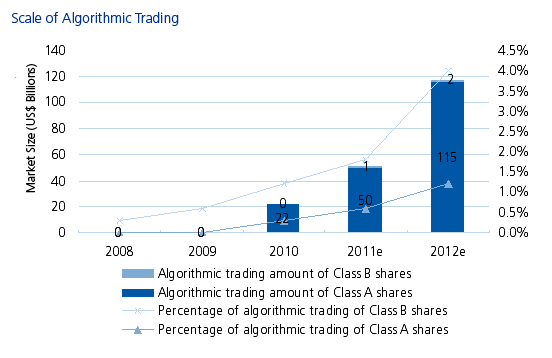Algorithmic Trading in China: Advanced Execution Trends, Traders, and Technology
Abstract
Celent estimates that algorithmic trading will account for about 0.6% of securities trading in China in 2011, and this figure is expected to reach 2.5% in 2013. The use of algorithmic trading is still minimal in the A-share market; the situation is slightly more optimistic in the B-share market. On the other hand, algorithmic trading is actively used in the stock index futures market.
In a new report, Algorithmic Trading in China, Celent examines the market size, investor segments, regulations, software providers and market data vendors supporting advanced execution in China. Hedge funds and securities firms will be the main customers for algorithmic trading over the next two years. Rapid improvement will be seen in the market data services sector in order to support algorithmic and high frequency trading.

The algorithmic trading vendors active in the China market include Hundsun Technologies, SunGard, TradeBlazer, Webstock, and Tinysoft. Some Chinese vendors have also developed algorithmic trading systems in collaboration with foreign vendors and financial institutions. Hundsun Technologies, for example, collaborated with UBS and Nomura Securities.
“Algorithms used in Europe and the US cannot be directly applied to China. Certain modifications and localization are required. The main differences with these markets include order speed, market data speed, and China’s T+1 trading system,” says Hua Zhang, analyst with Celent’s Asian Financial Services group and author of the report. “Celent expects the growth of algorithmic trading in the futures market, especially in equities index futures, will exceed that of the equities market itself.”

